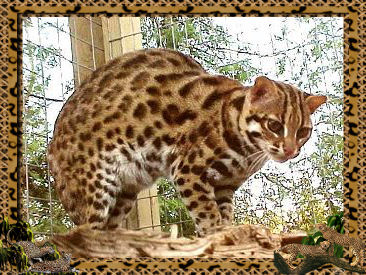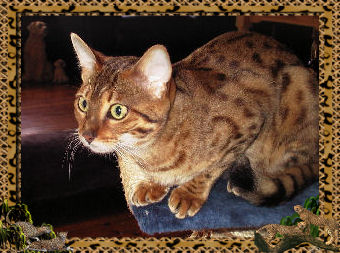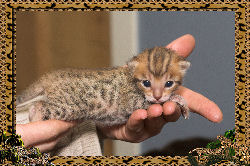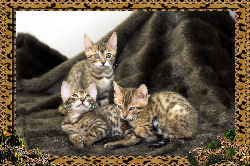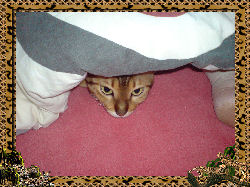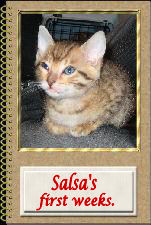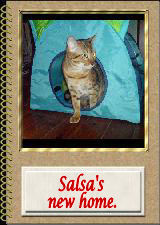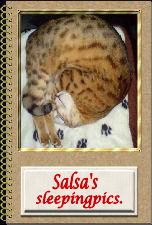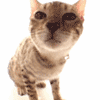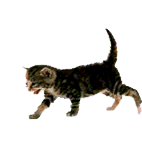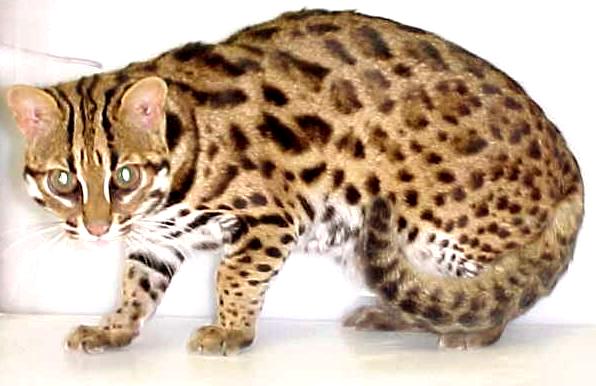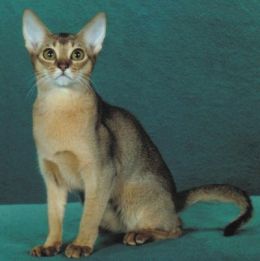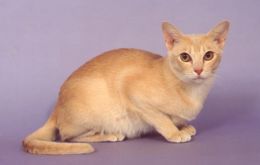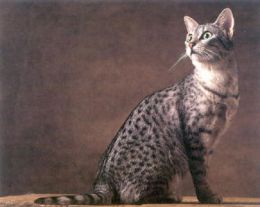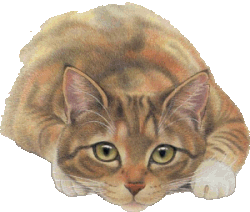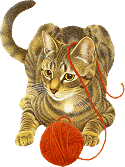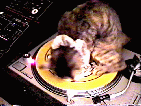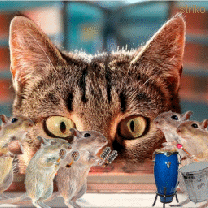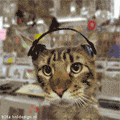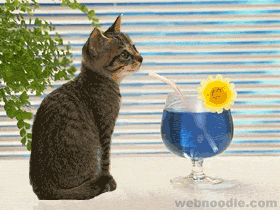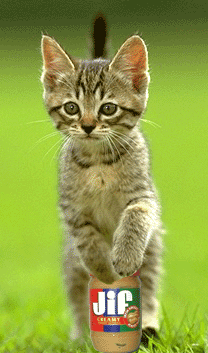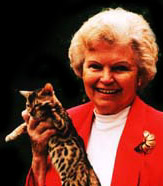
Jean S. Mill. |
Short about the
Bengal.
In
1965 Jean Sugden carried out (later Jean S. Mill) the first
experiments of crossbreeding the domesticated cat and
Asiatic leopard cat (Felis
Bengalensis) (ALC) in Arizona, USA.
Hun had a female ALC and
didn't believe it was possible to crossbreed this with a domestic
cat, but the result was a spotted female cat with the name Kinkin,
and she got a litter of kittens (one spotted and one black). This
was the foundation to breed a cat with an exotic look to reduce the
need for wild animals as pets. This line stopped after three years
because of death in the family.
Other ALC owners crossbred and got hybrid cats. One of them was Dr. Willard Centerwall (Loyola University). He
was a researcher on the cat disease leukos, a kind of viral blood
cancer. Wild cats are immune to this disease. Therefore they
crossbred the
ALC with shorthaired tabby housecats to study the immune defence
against leukos in the offspring. Later on Jean S. Mill got some of
those cats and many of the bengals today can be retraced back to the
Centerwall hybrids.
The
first generations are called hybrids because they are a mix of two
kinds of species. The first generation is called F-1 and only the
females are
fertile, which again is crossbred with a domestic cat and the
offspring is called F-2.
This goes on until the fourth generation (F-4). After that the
Bengal cat is a pure breed.
Several breeds have been used in the
process,
among them are Abyssian, Egyptian Mau and Burmese. Jean S. Mill
imported a spotted cat from India, "Tory of Delhi", that
supplied the breed with glitter in the fur.
After many generations the breed has
got stabile temperament and the males are fertile. In 1991 the breed
was approved by TICA (The International Cat Association) and the
Bengal cat came to Scandinavia in
1995.
The
Bengal is a playful cat his whole life and is clever to play by
himself.
The Bengal follows his owner around in the house to be sure that he
don't miss anything.
The Bengal is fairly engaged with water. Some confine themselves to
splash the paw into the water bowl, some will like to drink from the
water tap, while others rather goes into the shower while you are
there.
The Bengal cat is a intelligent cat and you can teach it simple tricks
as retrieval.
|
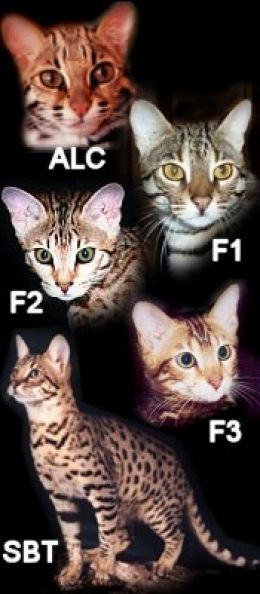 |











